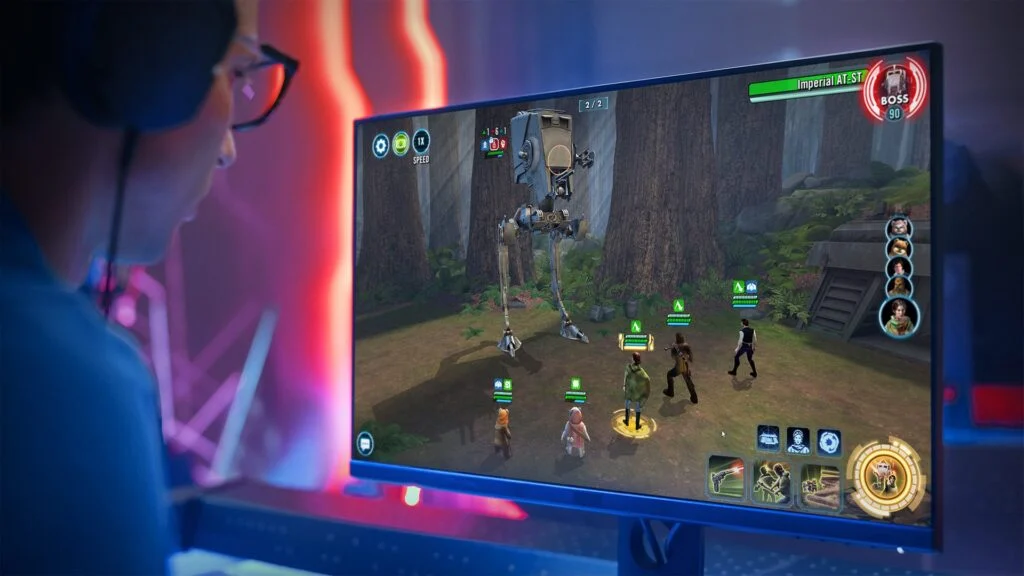In today’s digital workplace, the importance of video conferencing has skyrocketed. Seamless and reliable virtual meeting solutions have become essential for enhancing collaboration and communication. In this guest post, we will explore how WebRTC (Web Real-Time Communication) can be a game-changer in building efficient and interactive video conferencing solutions.
Understanding WebRTC for Video Conferencing Solution
Video conferencing powered by WebRTC brings real-time communication capabilities to web browsers. We will explain the concept of WebRTC and its significance in the context of video conferencing. Furthermore, we will discuss the key components of WebRTC, including audio/video streaming, real-time communication protocols, and browser compatibility. The benefits of using WebRTC, such as simplicity, scalability, and browser-based accessibility, will also be highlighted.
Key Features and Functionality of WebRTC
WebRTC offers a range of features that enhance video conferencing experiences. We will explore high-quality audio/video transmission, screen sharing, chat messaging, and interactive whiteboarding as essential features provided by WebRTC. Additionally, we will showcase the ability of WebRTC to establish peer-to-peer connections and support multi-party conferences, enabling seamless collaboration among participants.
Essential Features and Functionality Provided by WebRTC for video conferencing
WebRTC (Web Real-Time Communication) provides a comprehensive set of features and functionality that enhance the video conferencing experience. Let’s explore some of the essential features offered by WebRTC for video conferencing:
High-Quality Audio/Video Transmission: WebRTC enables high-quality audio and video conferencing Solution in real-time. It leverages advanced codecs and adaptive bitrate control to ensure smooth and clear audio/video streams, even in varying network conditions.
Screen Sharing: WebRTC allows participants to share their screens, presentations, or specific application windows during video conferences. This feature facilitates collaboration and enables effective visual communication, making it ideal for remote team meetings and online presentations.
Chat Messaging: WebRTC includes built-in chat messaging capabilities, enabling participants to exchange text messages alongside the video conference. This feature enhances real-time communication and allows participants to share links, documents, and other important information during the meeting.
Interactive Whiteboarding: WebRTC supports interactive whiteboarding, which enables participants to draw, annotate, and collaborate on a shared virtual whiteboard. This feature fosters creative discussions, brainstorming sessions, and collaborative problem-solving during video conferences.
Multi-Party Conferences: WebRTC allows for multi-party video conferences, where multiple participants can join and interact simultaneously. This feature is essential for team meetings, virtual classrooms, webinars, and other collaborative events involving a larger group of participants.
Bandwidth Adaptation: WebRTC dynamically adjusts the video quality based on network conditions and available bandwidth. It ensures a smooth and uninterrupted video conferencing experience by automatically adapting to varying network speeds, minimizing buffering and latency issues.
Echo Cancellation and Noise Reduction: WebRTC incorporates advanced audio processing capabilities, such as echo cancellation and noise reduction. These features improve audio clarity by suppressing background noise and echo, resulting in a more professional and enjoyable communication experience.
Cross-Browser Compatibility: WebRTC is designed to work seamlessly across major web browsers, including Chrome, Firefox, Safari, and Edge. Participants can join video conferences directly from their web browsers without the need for additional plugins or software installations, enhancing accessibility and convenience.
Device and Platform Support: WebRTC supports a wide range of devices, including desktop computers, laptops, smartphones, and tablets. It is compatible with various operating systems, including Windows, macOS, Linux, iOS, and Android. This broad device and platform support ensure that participants can join video conferences from their preferred devices, regardless of the operating system they use.
Building a Seamless Virtual Meeting Solution with WebRTC
Building a virtual meeting solution with WebRTC involves several steps. We will discuss the architectural considerations, including signaling, media servers, and network infrastructure, that play a crucial role in ensuring a seamless user experience. Best practices such as adaptive bitrate control, echo cancellation, and noise reduction will be highlighted to optimize video conferencing quality.
Security and Privacy Considerations
Security and privacy are paramount in video conferencing solutions. We will address the importance of implementing robust security measures in WebRTC-based solutions. Topics such as encryption, authentication, end-to-end encryption, secure signaling protocols, and data protection will be discussed to ensure the confidentiality and integrity of virtual meetings.
Integration and Customization Options
WebRTC can be seamlessly integrated with other collaboration tools and platforms. We will explore the possibilities of integrating WebRTC with CRM systems, project management tools, and other business applications to enhance productivity and streamline workflows. The availability of APIs and SDKs for developers to customize and extend the functionality of WebRTC-based solutions will also be highlighted.
Overcoming Challenges and Ensuring Reliability
WebRTC-based video conferencing solutions may face challenges like network congestion and firewall traversal. We will discuss strategies and solutions to overcome these challenges, including network optimization techniques and the use of Interactive Connectivity Establishment (ICE). Furthermore, we will emphasize the importance of testing, monitoring, and proactive maintenance to ensure a reliable and uninterrupted virtual meeting experience.
Conclusion:
WebRTC is a powerful technology for building seamless virtual meeting solutions. By leveraging its capabilities, organizations can enhance collaboration, communication, and productivity in the digital workplace. We encourage readers to explore the potential of WebRTC for their virtual meeting needs and embrace the future of collaboration. By harnessing WebRTC’s benefits, organizations can create tailored and scalable video conferencing solutions that drive success in the modern business landscape.




